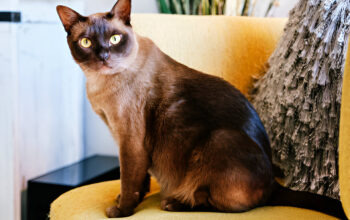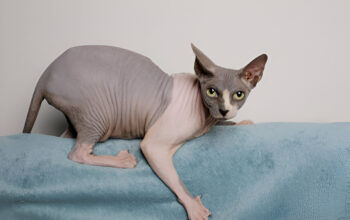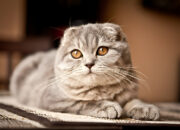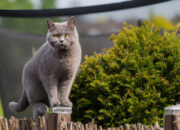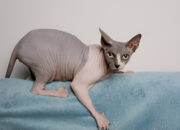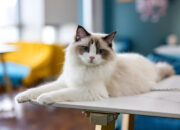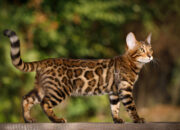Abyssinian Cat Breed Guide: Comprehensive Care, Personality, and Must-Know Information
If you want a graceful, intelligent, and engaging cat, the Abyssinian cat may just be the best fit for you. With its ticked coat, slender body, and affectionate temperament, this breed has so much more to offer than good looks.It’s a bolt of inquisitive energy and companionship!
Abyssinian Cat: Origin and History
A Return to Ancient Roots with a Modern Slant
The history of the Abyssinian cat breed is a rich one full of mystery and royalty. One of the oldest and most famous origins is traced to the region near Ancient Egypt, where images of cats bear resemblance to each other and are found in pharaonic tombs. The modern Abyssinian as it is known today was established in Britain in the 19th century from an Abyssinian named Zula who was brought to Britain by a soldier who returned from Abyssinia, which is now modern day Ethiopia.
Congruency of Cat Associations
The Abyssinian has been officially recognized by major cat registries such as CFA ( Cat Fanciers’ Association), TICA (The International Cat Association), and FIFe ( Fédération Internationale Féline) because of its distinctive fur pattern, athletic shape, and active characteristic.

Abyssinian Cat Body and Looks
Middling in build and graceful in form.
- Size: Medium
- Weight: 6 to 10 pounds
- Body: Athletic, Muscular, Supreme hanging shake,Formidable, and Very active.
- Well Developed: Head wedge shaped with soft contours
- Tail: Long and tapering
Iconic Ticked Coat
The most characteristic feature of the Abyssinian is its ticked coat, each hair is banded with different colours and the breed also possesses a structural coat pattern (horizontal orientation of hairs) which gives it a warm glowing effect in good light.
Common Coat Colors:
- Ruddy (most traditional)
- Sorrel (red)
- Blue
- Fawn
- Silver versions (hard-to-find and gorgeous)
The eyes and ears of the beholder
- Eye Shape: Almond-shaped
- Eye Colour: Gold, green or hazel
- Ears: Large, erect, and set far apart, contributing to an alert expression piled high between ears.
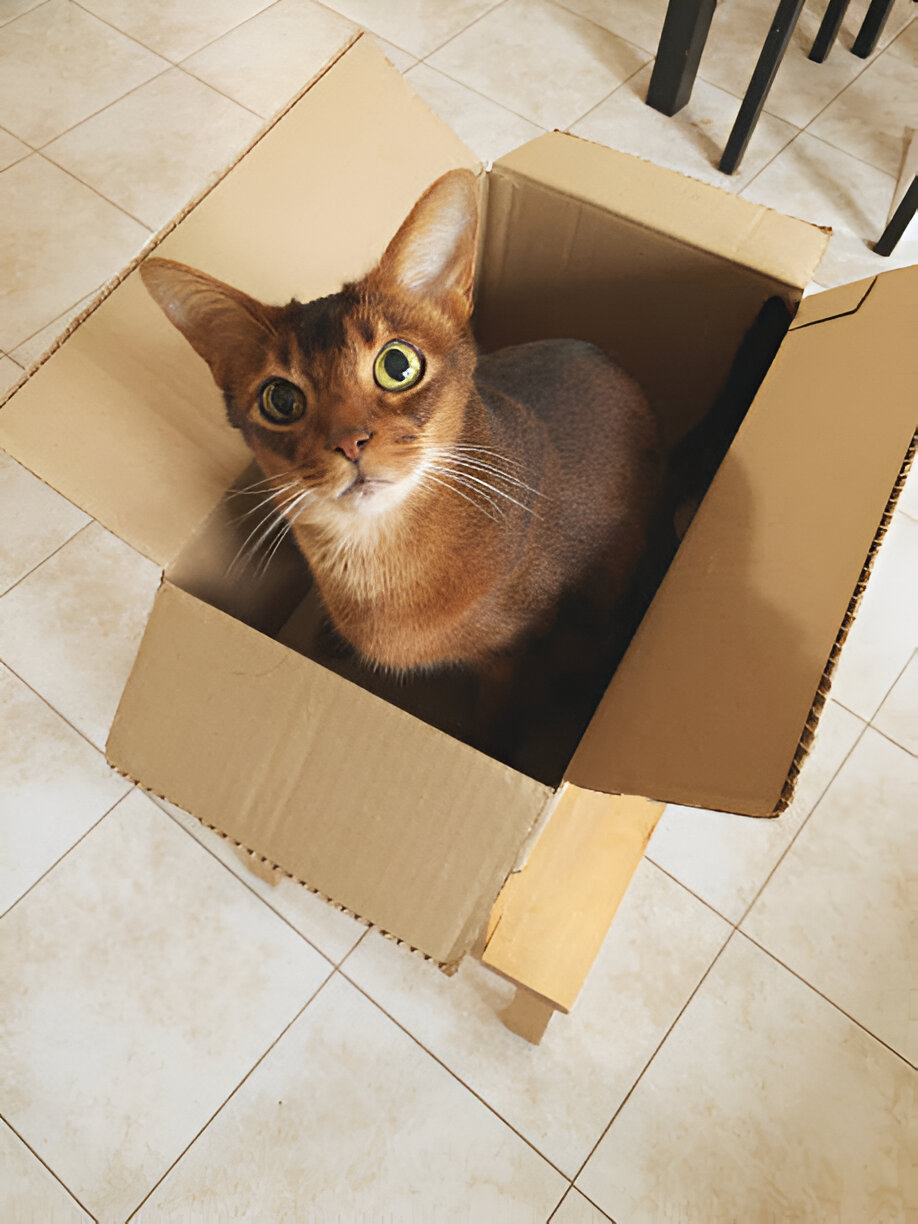
Abyssinian Cat Personalities
Curious, Playful, Intelligent
This is no ordinary couch-potato house cat. Curious by nature, it will snoop around in every room.
Social but Not Needy
- Not a lap cat but likes to be near you while you are doing your day to day.
- Moves with owner from room to room
- Wonderful at attaching to families and other animals
Vocal & Expressive in a pronounced manner
Less chatty than a Siamese, the Abyssinian informs you of its needs with quiet chirps and meows.
Grooming and Maintenance Advice
Low-Maintenance Coat Care
Abyssinians are the perfect choice for someone who doesn’t have time to do a lot of grooming: With their short, fine coat, they need an inverse amount of care:
- Grooming: Brush once a week with grooming glove or soft brush
- Bathing: Rarely needed
- Ears: Wipe clean once weekly to prevent gunk build-up
- Teeth: Several times weekly to 2-3 times per week
- Nails: Trim every 2–3 weeks
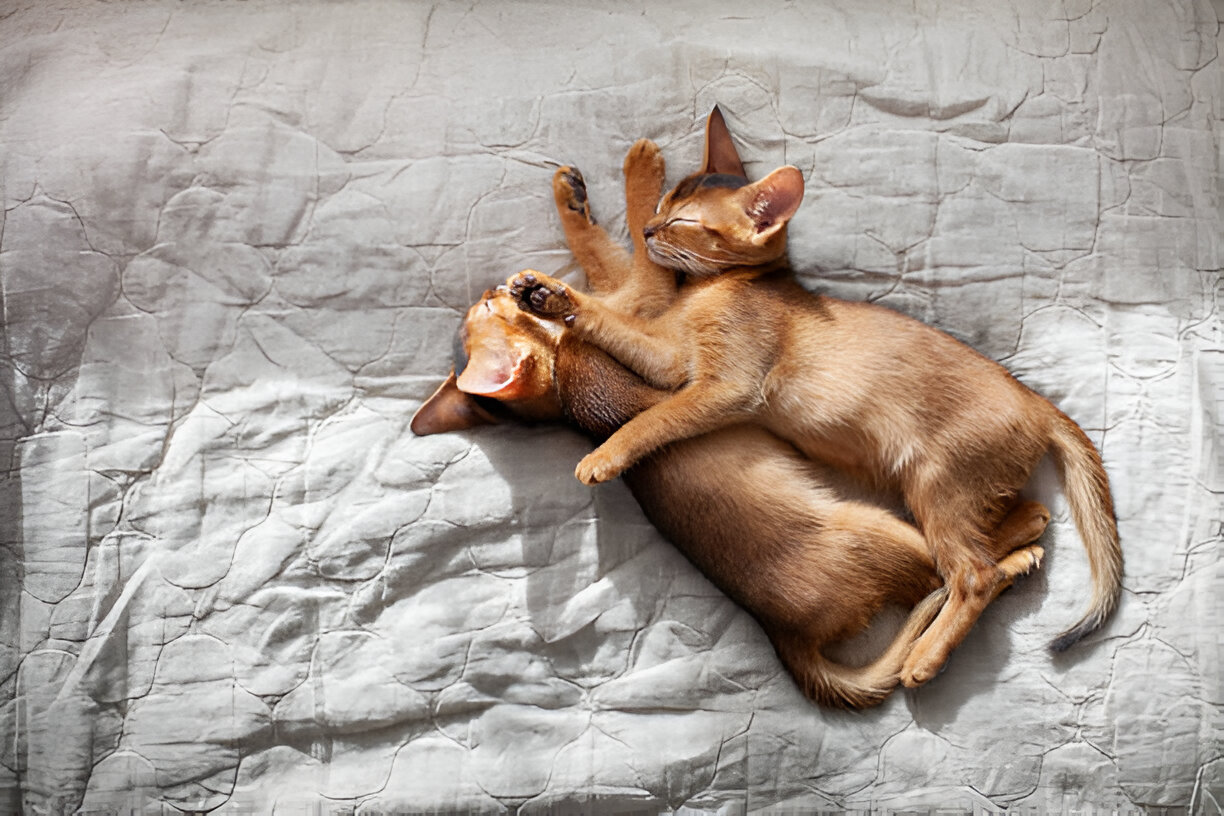
A Grooming Tip for a Healthier Shine
Feeding your Abyssinian with a diet that is high in Omega-3 and Omega-6 fatty acids will keep the coat shiny and will keep shedding under control.
Nutrition and Feeding
High-Quality Breed Needs High-Quality Protein Canine loves high-quality protein from their diet
The Abyssinian is a lively cat, which should be reflected in its diet.
Ideal Diet Includes:
- First ingredient is Real meat (chicken, fish, or turkey)
- In kibble, grain free high-protein
- Vitamin and mineral information
- Taurine: for heart and eye health
Feeding Schedule
- Kittens: 3-4 meals per day.
- Adults: 2 meals per day
- Make sure to have plenty of fresh water available at all times
Training and Enrichment for Abyssinian Cats
Easy to Train and Smart
The Abyssinian is very trainable with positive reinforcement techniques including:
- Clicker training
- Tricks that earn your dog a rewarded behavior, such as “sit,” “come” or “high-five.”
- Mental enrichment – puzzle feeders For mental simulators
Seite: Enrichment Concepts for Daily Enrichment
- Feather wands and laser pointers from interactive toys
- Cat trees and climbing towers
- Cat window perches for bird watching
- Rotate for variety and stimulation keeps play time fun.

Health and Longevity in Abyssinians
Common Health Concerns
While generally healthy, Abyssinians can be predisposed to:
- Periodontal disease Those in need of regular dental care
- PRA (progressive retinal atrophy) – leads to blindness
- A kidney disease caused by amyloid (a certain type of protein) kidney-related amyloidosis
- Pyruvate kinase deficiency – an inherited red blood cells disorder
Prevention and Vet Care
- Regular annual checkups, including a blood test
- Genetic testing through breeders prior to adoption
- Vaccinations as per schedule
- Regular dental cleanings
Ideal Living Environment
Apartment vs House—Which Is Better?
Abyssinians are suitable for small or big houses and apartments and can only survive if they have:
- Large number of spaces to climb (shelves, cat trees)v
- Interactive play options
- Safe window views
Are Abyssinians Indoor Cats?
Absolutely. Because they are incorrigibly nosy and not nearly street smart enough to stay out of danger, the best thing is to leave them indoors. Consider:
- Catio or enclosed balconies
- Harness walks (if trained)
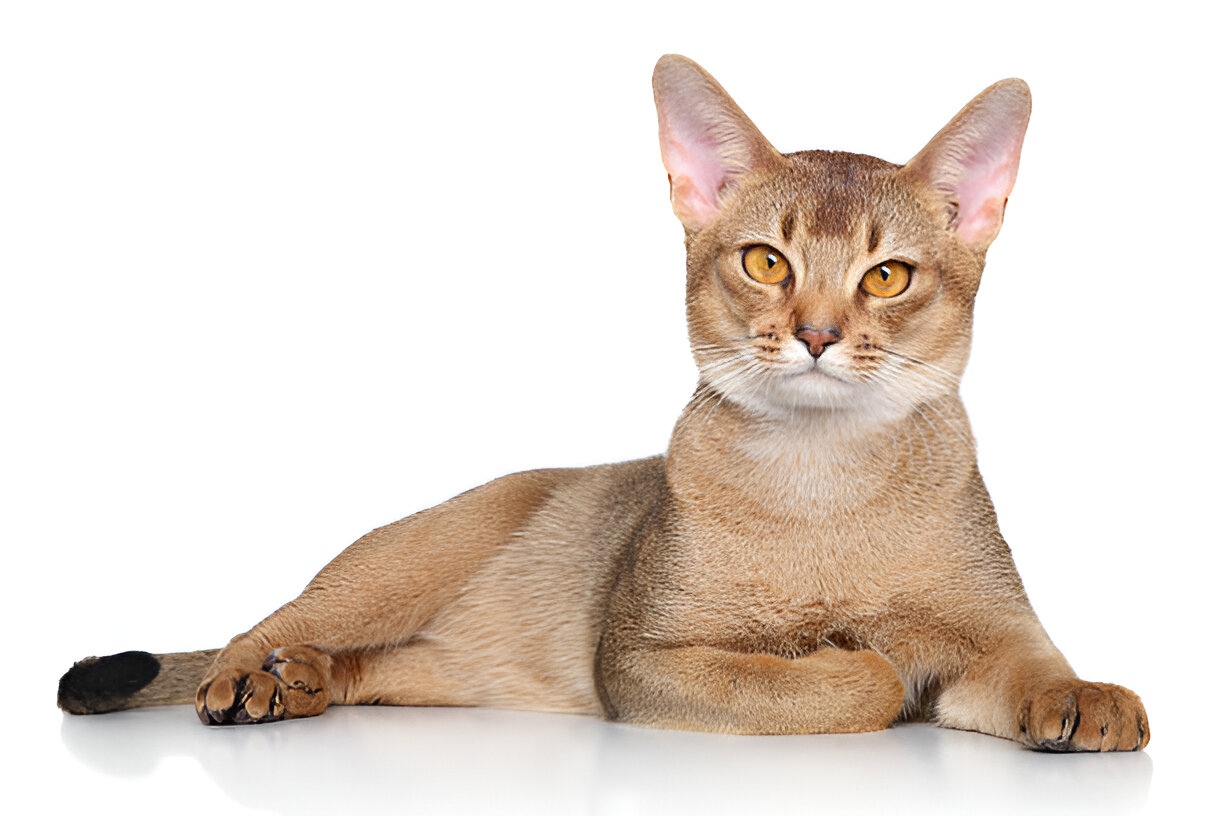
Weights and Sizes of Abyssinian Cat with Kids and Family and Other Pets
Excellent for Families with Well-Behaved Children
Abyssinians get along well with:
- Older children who respect limits
- Friendly dogs and cats
- Monitor early interactions, particularly with toddlers.
Introducing New Pets
They are very quick to adapt but also need a calm and slow introduction when it comes to other animals.
Fun Facts About Abyssinian CatsAh, Abyssinian cats.
- Named Aby-grabbys for their tendency to take shiny things
- Known as “half-cat, half-monkey” because of their dexterity
- Love water! Could play in sinks, or watch dripping taps
- Their fur is similar to that of a wild cougar or rabbit
Abyssinian Cat Cost, Pricing & Adoption Guide
Cost Breakdown
- Show-quality kittens: $500 – $1,200
- Show quality kittens: $1,500 – $2,500+
Costs By Personality The cost varies and depends on the reputation of the breeder, lineage and location.
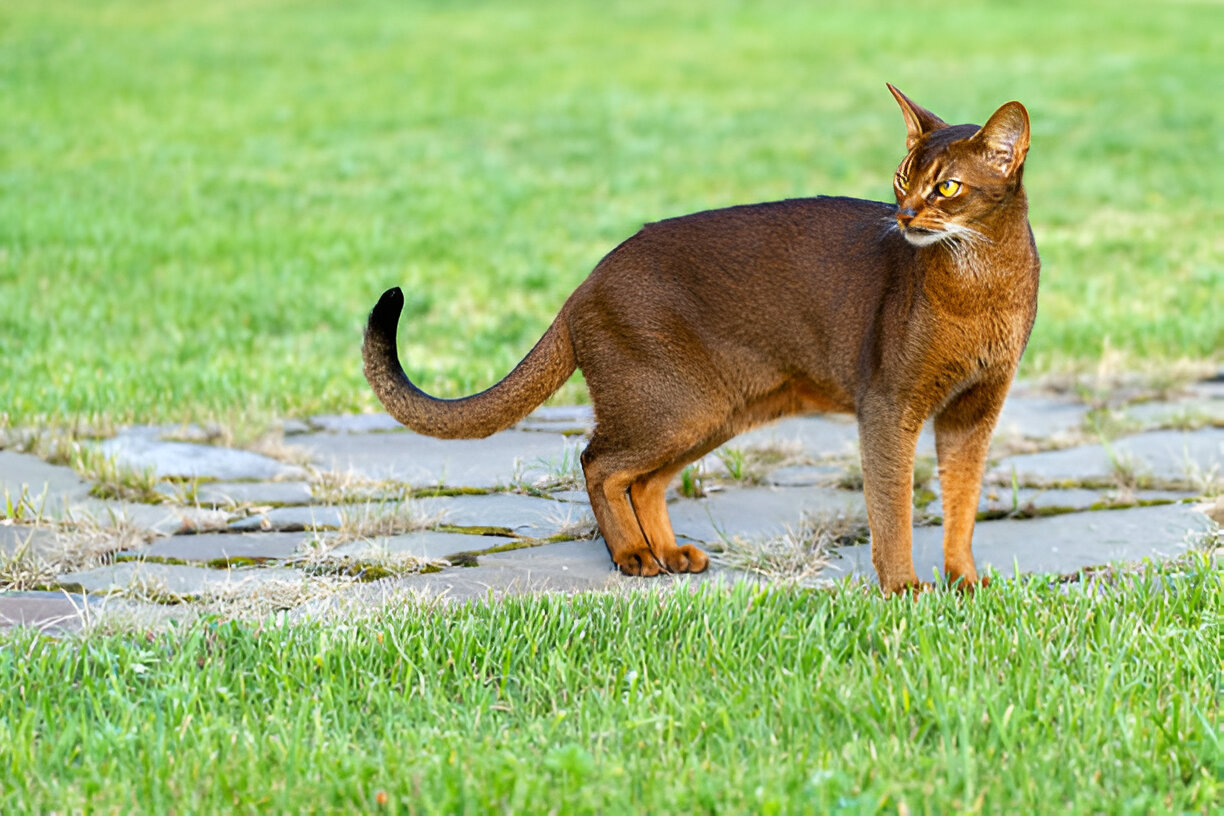
Selecting the Correct Breeder
Look for breeders who:
- Provide vet checks and genetic testing results
- Permit visitation in person or via video
- Do not let go of them before 12-14 weeks of age
- Continue to offer help after adopting
Is It the Right Cat For You?
Ideal For
- Children and family on the go
- Individuals who can offer daily stimulation and play
- Homes with other pets
Not Ideal For
- Owners seeking a lap cat
- Those away from home often
- Homes lacking enrichment
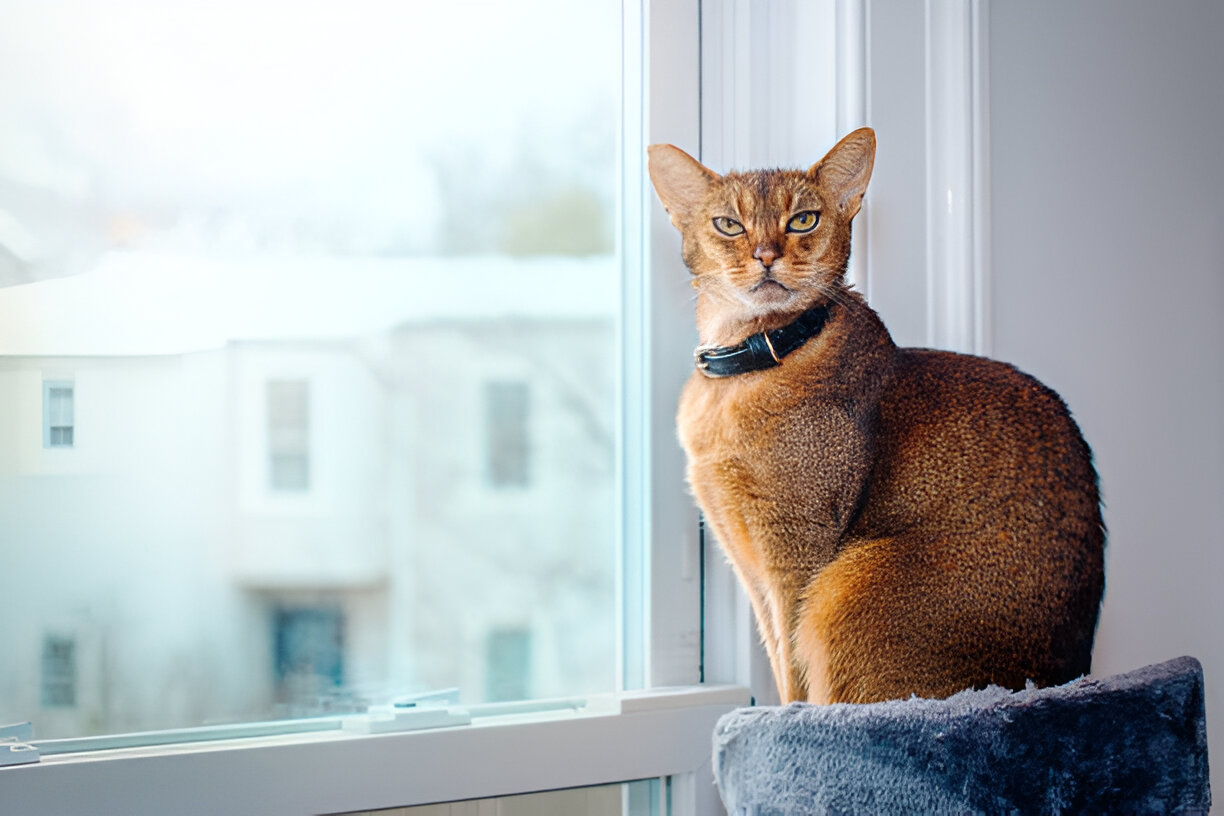
What Makes an Abyssinian Cat an Awesome Pet?
The Abyssinian is an exciting combination of beauty and personality. Known for its distinctive coat, engaging personality, and minimal grooming requirements, this breed remains a favorite among fanciers. Differentiating between a cat-first-time-owner or an experienced feline devotee, the Abyssinian returns a truly rewarding companionship.

